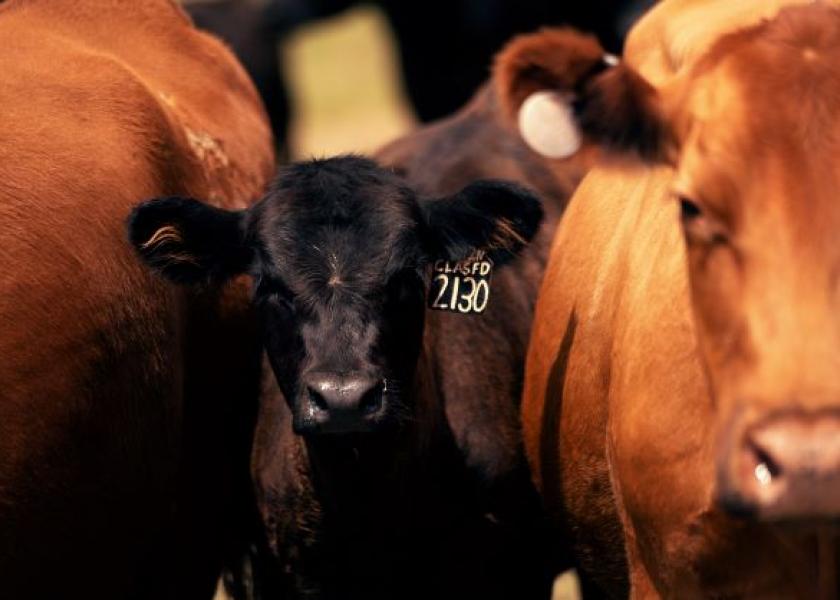It’s Time For a New Approach to Internal Parasites in Cattle

The last new molecule for internal parasite control was introduced into the marketplace nearly 15 years ago. Managing risk, which includes parasite management, is a key component of operational sustainability. It has been said one cannot manage what one does not measure. Therefore, we must do a better job at measuring the risk of parasitism. If we can better measure parasitism, we, in turn, should be able to better manage parasites and help elongate the effectiveness of currently available molecules. To do so, it’s important to understand where we’ve been and how we treat internal parasites in the future.
History of internal parasites
Since cattle were first domesticated, cattle producers have dealt with decreased performance in their herds due to four main categories of internal parasites. Each of which pose a different risk of economic loss for the producer and potential harm to cattle. They are:
• Protozoa (coccidia and cryptosporidium)
• Cestodes (tapeworms)
• Nematodes (roundworms)
• Trematodes (flukes)
It was nearly 60 years ago when one of the first active ingredients, thiabendazole, was brought to the marketplace to help reduce potential losses from internal parasites, specifically gastrointestinal (GI) nematodes. Over time, we saw several new molecules and drug classes brought to the marketplace, all of which served as valuable tools for producers in their fight against internal parasites.
Despite the introduction of these tools, producers continue to be challenged by GI nematodes. Within 10 years of each new molecule being brought to market, we began to see reports of resistance in one or more parasite species to that molecule. Today, GI nematodes are said to be responsible for approximately $3 billion in losses across all aspects of the cattle industry in the U.S.1
Because of this, we cannot continue to think in the narrow terms of a “solution in a syringe” to control internal parasites. It is time to think of managing parasites of economic concern to a level we can live with economically and our cattle can live with physiologically.
Parasite management tools: strengths and weaknesses
Parasite management is a big-picture approach to internal parasites that includes pasture management, stocking density, seasonal grazing patterns, targeted and timely treatment(s), species of parasite present, treatment(s) appropriate for the species of concern and refugia.
Several tools exist to evaluate the presence of parasites, the species present and effectiveness of a given treatment. These include:
• Fecal egg counts (FEC).
• Coproculture: hatching parasite eggs in the lab to identify the species in a given sample.
• Fecal egg count reduction test (FECRT): the difference in egg counts before and after treatment.
• Nemabiome sequencing: a PCR panel that describes the parasite species present in a sample.
• PCRs to detect genes that code for resistance to one or more anthelmintics.
While each of these have a place in the process of developing parasite management strategy, they also each have their own strengths and weaknesses. For example, FEC gives results as eggs per gram (EPG) of feces. On the surface, it would seem to represent the parasite load of a given host. However, as a standalone number, EPG can be a less than accurate indication of severity of parasite load due to time of year, age of host and species of parasite present, which can all influence the number and therefore the interpretation of the test.
This is why it’s important to understand what species of internal parasites are present. There are around 15 species of parasitic worms affecting cattle but four or five are responsible for most of the economic losses. These top five can have regional differences in both importance and severity of infection. The females of each species also have different reproductive capacities.
For example, Nematodirus lay 50-100 eggs per day while Haemonchus can lay 10,000 or more. One of the most significant and costly parasites, Ostertagia, will lay only 100-200 eggs per day. While it may seem obvious to use FEC, when one species is laying 100 times more eggs than another species, the results can be misinterpreted. Not only that, but four of the most common and economically important worms have eggs that are not distinguishable from each other under the microscope. So, when we perform a FEC alone, all we can conclude is the animal has parasites as represented by some number of eggs seen from the test results.
Species Specific Quantitative Analysis: The future of internal parasite control
Species Specific Quantitative Analysis (SSQA) is a holistic and innovative approach to GI nematode management that uses a combination of the tools listed above to evaluate the need for treatment and potential treatment options including:
• The estimated relative parasite load using FEC.
• Parasite species present, which is evaluated by coproculture and/or nemabiome sequencing.
• Pathologic potential of the species represented.
• The estimated percent of the population represented by each species within a given herd or production unit.
• Evaluation of efficacy of previous or current treatment using FECRT.
As with many things in life, making informed decisions helps us to move forward. By using SSQA to evaluate the parasites present, producers can make more informed choices in their parasite treatment protocols, which will help reduce the risk of developing resistance and help to ensure the longevity of the currently available molecules for internal parasite control.







